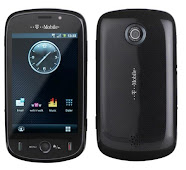 You may be wondering why Nokia, the world's mobile phone leader, is finally entering the personal computer market.
You may be wondering why Nokia, the world's mobile phone leader, is finally entering the personal computer market.
Well, as Kai Oistamo, Nokia's executive vice president for devices, summed it up, "A growing number of people want the computing power of a PC with the full benefits of mobility ... and the Nokia Booklet 3G is a natural evolution for us."
After more than 25 years as a pioneer and leader in the mobile industry, Nokia now is rocking the PC world with the new, Windows-based Nokia Booklet 3G.
So is it a netbook or laptop? The 10.1-inch screen and Atom processor put it clearly in the netbook market, but, according to Wired, it also comes with some extras you won't find elsewhere - the kind of extras you'd expect from a cell phone manufacturer: "Nokia doesn't make phones. It makes portable devices. And it appears the Finnish company also doesn't make netbooks. Instead it makes "mini-laptops . "
"You could call it a fancy netbook," another site, Engadget, writes, "but that screen is higher res than your average Eee, and it also sports integrated 3G wireless and a hot-swappable SIM card, so it's definitely trying to define its own niche."
There is an Intel Atom Z530 running at 1.6 GHz, 1 GB of memory and a 120 GB hard drive. The Booklet 3G promises to deliver longer operating time with up to 12 hours of battery life. A full-function PC, the new mini-laptop weighs 1.25 kilograms, with a thickness of slightly more than 2 centimeters. It also offers a broad range of connectivity options, including 3G/ HSPA and Wi-Fi.
Its talents don't end there. The mini-laptop also comes with an HDMI port for HD video out, a front-facing camera, integrated Bluetooth and an SD card reader. Other features include the 10-inch glass HD-ready display and integrated A-GPS which work with the Ovi Maps gadget. The Nokia Booklet 3G also can access and play back millions of tracks through the Nokia Music Store, or using Ovi Suite to sync seamlessly from your Nokia smartphone to your mini-laptop.
Fortunately, I had the opportunity to get hands-on with the ultra-portable device at Nokia World 2009 (Sept. 2-3) in Stuttgart, Germany. I had the impression that it really looks like a notebook, rather than a common netbook. It even deserves its premium positioning. Its unibody aluminum chassis feels as slick as an Apple's MacBook Pro. Its soft keyboard with well-spaced buttons made me enjoying typing. The trackpad also is large.
Why does the ultra-portable use Windows 7? Instead of, let's say, Maemo software as implemented on the new-launched N900? (The N900 is Nokia's latest generation of Internet Tablets using the new Linux-based Maemo 5 software.)
In a group interview during the Nokia World, Jonas Geust, vice president of Explore, said it's a pragmatic way for Nokia to enter the laptop market by using Microsoft's latest operating system. Moreover, "Maemo itself, and also Symbian, so far, couldn't be used for a larger screen like a notebook," he said.
The Nokia Booklet 3G netbook will cost 575 euros (US$816) before subsidies and taxes, but according to Nokia executive vice president Anssi Vanjoki, the company expects the device to be cheaper when it reaches consumers as a result of subsidies by network operators.
However, getting some operators to subsidize the netbook may be difficult, according to Geoff Blaber, analyst at CCS Insight. As PC World reports, Nokia's plan to push a suite of its own online services with the Booklet 3G will not sit well with carriers offering competing services.
Jonas admitted that the Booklet 3G is not designed as a cheapest notebook. "It's a stylish notebook with robust connectivity and longer operating time," he said. "We expect everybody will love the pocketable notebook we offer."
Last but not least, let's see how Nokia will be able to deal with the notebook market. A good try, I think.
News
- Manchester United fightback foils Wolfsburg
- Miyabi can come
- New G20 framework benefits Indonesia
- Yahoo sees $150M windfall from Alibaba.com sale
- The new Nokia Booklet 3G: A netbook or a notebook?
- Huawei launches debut mobile devices
- Brussels A city of more than you might think
- Julia Roberts Will come to Indonesia
- BlackBerry Curve 8520 For Intermediate Segment









0 comments
Post a Comment